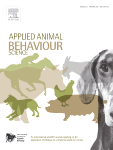Document type : Scientific journal available online before publication in Reviews in Aquaculture
Authors: Pablo Arechavala-Lopez, Maria J. Cabrera-Álvarez, Caroline M. Maia, Joao L. Saraiva
Preview: Environmental enrichment (EE) can improve the welfare of captive fish. Its objective is to provide new sensorial and motor stimulation in order to help meet their behavioural, physiological, morphological and psychological needs, whilst reducing stress and frequency of abnormal behaviours. In fish farms, rearing environments are usually designed from a human perspective and based on economic requirements, mainly for practical reasons for the farmer, with little consideration for animal welfare. Throughout aquaculture production cycles, many farming operations can be stressful for fish, and EE may not only help them cope with these stressful events but also improve their overall welfare. In recent years, increasing interest on the effects of EE in captive fish has focussed mainly on structural enrichment. However, there are many other enrichment strategies that deserve attention (e.g. sensorial, occupational, social and dietary enrichment) and which may be of interest for fish farming. Here, we review in depth the existing literature on EE and its effects on the welfare of a wide range of farmed fish species, discussing the feasibility and potential applications of different EE strategies to promote fish welfare at a commercial scale. We also present a practical framework to address the design, validation and implementation of EE by the aquaculture industry, taking in consideration the technical challenges of providing enrichment for farmed fish.






